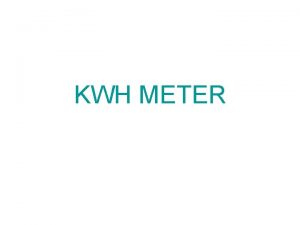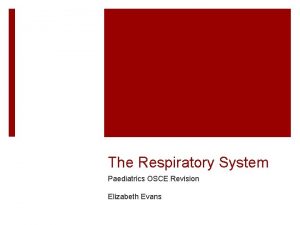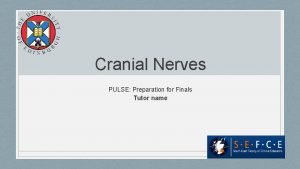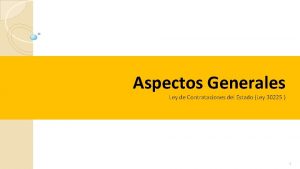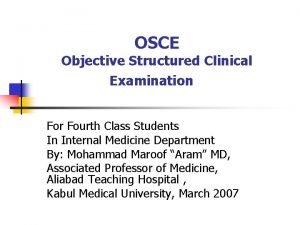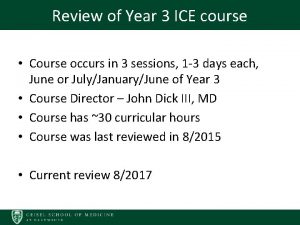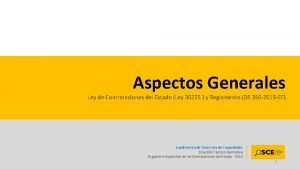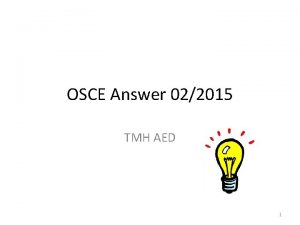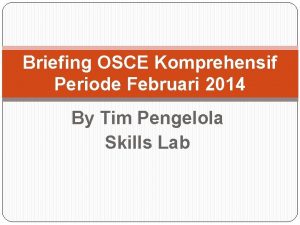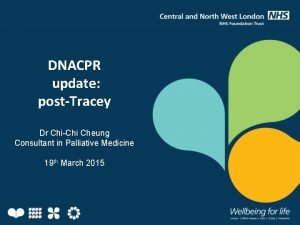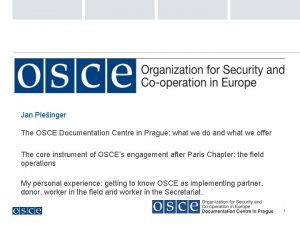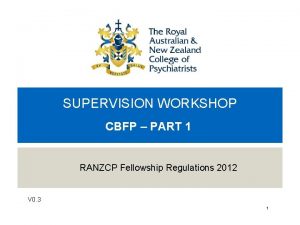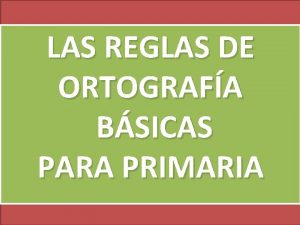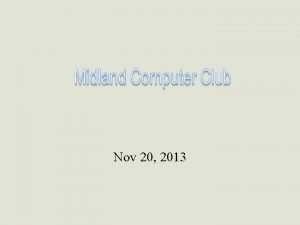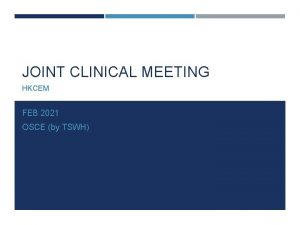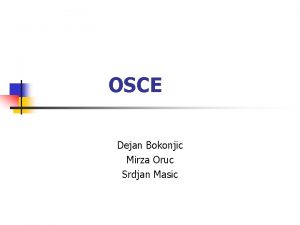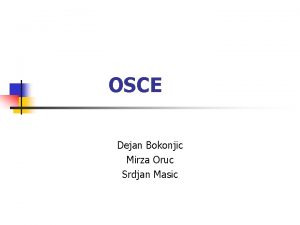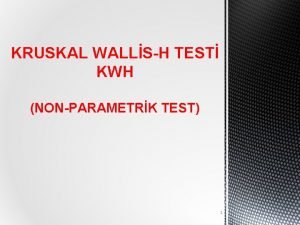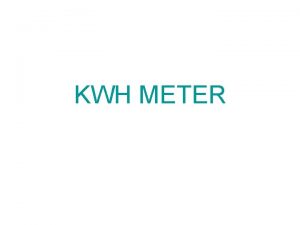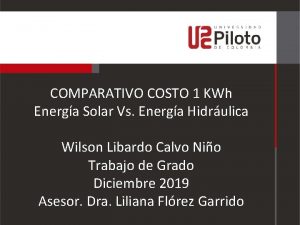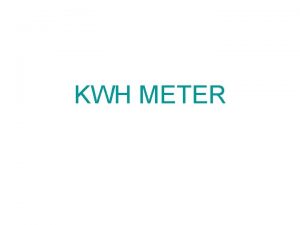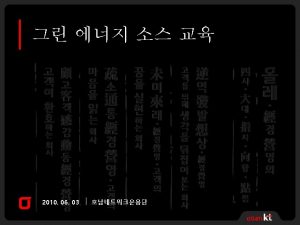Joint Clinical Meeting OSCE 07 Nov 2018 KWH
























- Slides: 24

Joint Clinical Meeting OSCE 07 Nov 2018 KWH

Case 1 • • • 10/Boy PMHx: asthma Mild URTI symptoms x 1 week Sudden onset of SOB at home Increasing in severity Given ventolin puff at home but no improve Upon AED arrival Lethargic, obey command, CR <2 sec HR 150, Sa. O 2: 98% on non rebreathing mask RR: 44 -50 Chest: poor AE with expiratory wheeze

Case 1 (Questions) • How do you classify the severity of acute exacerbation of asthma? • What is the severity of this patient? • What is the management plan? • If you decided to intubate the patient, what induction agent you would use? • What ventilation strategy would be use in the patient?

Case 1 (Answer) • How do you classify the severity of acute exacerbation of asthma? What is the severity of this patient? • The severity of asthma can be classified into • Mild: SOB when walking, Sa. O 2 >95%, no respiratory distress • Moderate: SOB at rest, Sao 2 >92%, PER >50%, talk in full sentence • Severe: Sa. O 2 <92% PER <50%, use of accessory muscle, HR>130, RR>50, too breathless to talk • Life-threatening: SAO 2<92%, PER <33%, cyanosis, altered mental, silent chest, poor respiratory effort • The patient is in severe exacerbation of asthma and progressing to life-threatening asthma

Case 1 (Answer) • What is the management plan? • Goal of management: • Rapid reversal of airflow obstruction – bronchodilator/steroid • Correction of hypoxemia – O 2 • Manage in resuscitation room • Monitoring of respiratory rate, heart rate, oxygen saturation, degree of alertness with regular reassessment • ABG CXR • O 2 • Medication: • Bronchodilator (Ventolin) nebulized or inhaler • Steroid – methylprednisolone 1 to 2 mg/kg • magnesium sulfate - (75 mg/kg, maximum 2. 5 g administered over 20 minutes if still no improvement • Obvious respiratory distress that the clinician judges to be unsustainable require prompt intubation

Case 1 (Answer) • If you decided to intubate the patient, what induction agent you would use? • Induction agent: • ketamine (bronchodilation) 1 -2 mg/kg • What ventilation strategy would be use in the patient? • Permissive hypercarbia to avoid barotrauma/auto-Peep • Ventilator setting: • small vital volume: 6 ml/kg • low RR: 8 -10/minute • Longer I: E ratio 1: 4 -5 • Peep: 0

Case 2 • 62/M • History of ESRF, thyrotoxicosis with recently thyroidectomy done • C/O dizziness, both hands and feet numbness and generalized weakness • Muscle spasm and twitching, brisk reflexes • Chest/CVS/Abdomen: NAD

Case 2

Case 2 (Questions) • What is the provisional diagnosis? • What further examinations and investigations you would like to do? • From the ECG, what do you worry about? • How do you manage this patient?

Case 2 (Answer) • What is the provisional diagnosis? • Hypocalcaemia related to recent thyroidectomy • What further examinations and investigations you would like to do? • Physical examination • Trousseau's sign — the induction of carpopedal spasm by inflation of a sphygmomanometer above systolic blood pressure for three minutes • Chvostek's sign — contraction of the ipsilateral facial muscles elicited by tapping the facial nerve just anterior to the ear • Laboratory test to confirm Hypocalcaemia • Calcium corrected with serum albumin • Corrected Ca 2+ = Measured Ca 2+ + (40 -albumin)/40 • Ionized calcium • Additional test: Magnesium, parathyroid hormone, phosphate

Case 2

Case 2 (Answer) • From the ECG, what do you worry about? • Prolong QTc • Torsade's de pointes can potentially be triggered • How do you manage this patient? • Put on close monitoring (cardiac monitor, vital signs) • IV Calcium is indicate in following condition • 1. Symptoms (carpopedal spasm, tetany, seizures) • 2. A prolonged QT interval • 3. In asymptomatic patients with an acute decrease in serum corrected calcium to ≤ 1. 9 mmol/L • IV calcium 1 or 2 g of calcium gluconate/chloride, infused over 10 to 20 minutes

Case 3 • • • 22/M Good past health vomiting then collapsed at home taken unknown med, unknown time of ingestion arrived at your emergency department with the following vital signs: • • • Temp 37 BP 120/70 P 100 in sinus rhythm RR 14 Sa. O 2 98% on non-breathing mask GCS 3/15 with pin-point pupils

Case 3 • What is the initial management plan? • After the initial management in 1, the ECG suddenly changed. • Please describe the ECG • What is the subsequent management?

Case 3 • The AXR showed radio-opaque substance in stomach. • Please list 3 drugs are radiopaque on x-ray. • What is the likely drug in this patient?

Case 3 (Answer) • What is the initial management plan? • Airway, Breathing : assess the airway patency, provide oxygen consider to intubate this patient in term of low GCS and history of vomiting • Circulation: IV assess, IVF • Continuous monitor: BP/P, Sa. O 2, cardiac monitor • Ix: • • • H’stix ECG – rhythm, rate, QT, QRS complex CXR - pulmonary edema or pneumonitis ABG - confirm hypoxia, metabolic acidosis R/LFT - urinalysis – proteinuria, myoglobin • Decontamination: nil, unknown drug and time of ingestion • Antidote: nil, unknown drug

Case 3 (Answer) • After the management in 1, the ECG suddenly changed. • Please describe the ECG • Polymorphic ventricular rhythm • the QRS complexes “twist” around the isoelectric line • Torsade's de pointes rhythm

Case 3 (Answer) • What is the subsequent management? • Assess the pulse • No pulse – defibrillation • Pulse with lowish BP or no BP – cardioversion • Heamodynamically stable – • Magnesium – IV Mg. SO 4 first-line therapy, being highly effective for both the treatment and prevention, 2 g over 1 min • Isoproterenol – Isoproterenol, 2 mcg/min in adults, titrated to achieve a heart rate of 100 beats per minute • Correct the underlying electrolyte abnormality if any

Case 3 (Answer) • The AXR showed radio-opaque substance in stomach. • Please list 3 drugs are radiopaque on x-ray. the mnemonic CHIPES: C - Calcium Carbonate, chloral hydrate H - Heavy metals – mercury, lead I - Iron and Iodine P - Phenothiazines (includes antipsychotics like chlorpromazine (thorazine) and antiemetics like prochlorperazine (compazine)) • E - Enteric coated pills • S - Solvents [halogenated ones like chloroform] • • • What is the likely drug in this patient? • chloral hydrate (ventricular arrhythmia and coma)

Case 4 • 27 Male • Complained of right thumb pain when practicing boxing

Case 4 • • Please describes the x-ray finding What is the named of the fracture? What is the common mechanism of injury? What is the management plan?

Case 4 (answer) • Please describes the x-ray finding. • displaced fracture involving the articular surface of the base of the right thumb metacarpal. • subluxed carpo-metacarpal joint • What is the named of the fracture? • Bennett fracture

Case 4 (answer) • What is the common mechanism of injury? • The common injury mechanism is an axial loading onto a flexed thumb metacarpal joint

Case 4 (answer) • What is the management plan? • Analgesics e. g. NSAID • Immobilization e. g. thumb Spica • early orthopedics referral for definitive treatment • closed reduction alone is unlikely to be successful as CMC stability is compromised by the pull of APL • closed reduction with K-wire fixation • open reduction and internal fixation
 Kwh meter
Kwh meter Knx kwh meter
Knx kwh meter Novec kwh rate
Novec kwh rate Cornyebacteria
Cornyebacteria Rutherford morrison scar
Rutherford morrison scar Cranial nerve osce
Cranial nerve osce Osce
Osce Osce medical
Osce medical Ice osce
Ice osce Difference between osce and ospe
Difference between osce and ospe Procedimiento de selección osce
Procedimiento de selección osce Osce data interpretation
Osce data interpretation Sgarbossa criteria
Sgarbossa criteria Osce komprehensif adalah
Osce komprehensif adalah Dnacpr osce
Dnacpr osce Osce documentation centre in prague
Osce documentation centre in prague Bad moles
Bad moles Osce
Osce Paediatric history taking
Paediatric history taking Ranzcp osce
Ranzcp osce Que letra continua m v t m j
Que letra continua m v t m j Months of the year december
Months of the year december Imnivoro
Imnivoro Nov 19 1863
Nov 19 1863 Ismi və feili birləşmələr
Ismi və feili birləşmələr
